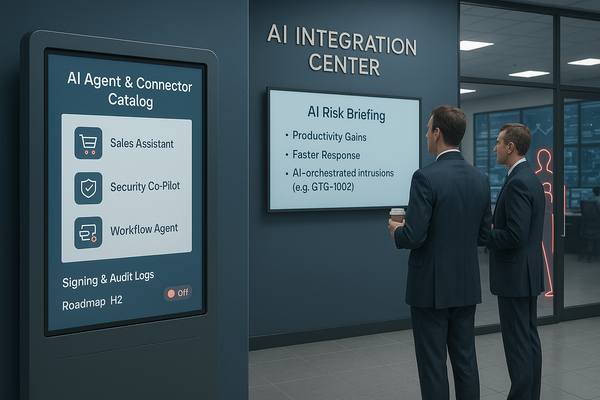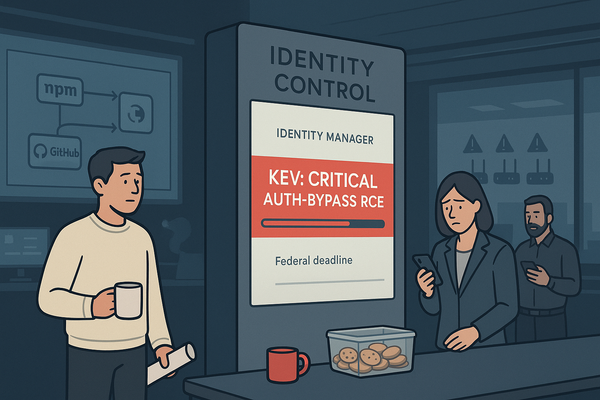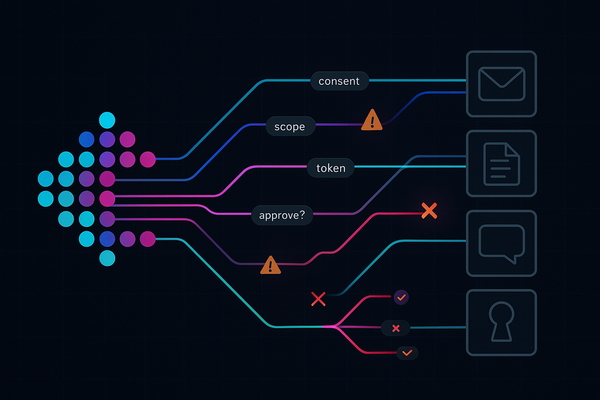Lynx and Cicada3301: Evolving Ransomware Threats in 2024
The threat actors "Lynx" and "Cicada3301" have been active in recent cyber campaigns, employing sophisticated tactics, techniques, and procedures (TTPs) to target various sectors. Lynx, a rebranding of the INC ransomware, has been particularly active in ..

TL;DR
- Double Extortion Tactics: Both Lynx and Cicada3301 employ double extortion tactics, exfiltrating data before encrypting it to increase pressure on victims to pay the ransom.
- Phishing and Malicious Downloads: Lynx disseminates its ransomware through phishing emails and malicious downloads, while Cicada3301 uses phishing, PsExec, and RDP for initial access.
- Advanced Encryption Algorithms: Lynx uses AES-128 and Curve25519 Donna encryption algorithms, while Cicada3301's ransomware is written in Rust, enhancing its evasion capabilities.
- Service and Process Termination: Lynx ransomware terminates services and processes, encrypts network drives, and deletes shadow copies and backup partitions to maximize its impact.
- Code Reuse and Evolution: Lynx has repurposed code from INC ransomware, and Cicada3301 has built upon the BlackCat codebase, indicating a trend of code reuse and evolution among ransomware groups.
- Targeted Sectors and Regions: Lynx targets sectors such as retail, real estate, architecture, financial, and environmental services in the U.S. and UK, while Cicada3301 targets financial services, real estate, and retail sectors in regions like India, Japan, and South Korea.
- Ransomware-as-a-Service (RaaS): Both Lynx and Cicada3301 operate using a RaaS model, allowing them to recruit affiliates and expand their reach.
Research Summary
The threat actors "Lynx" and "Cicada3301" have been active in recent cyber campaigns, employing sophisticated tactics, techniques, and procedures (TTPs) to target various sectors. Lynx, a rebranding of the INC ransomware, has been particularly active in the U.S. and UK, targeting sectors such as retail, real estate, architecture, financial, and environmental services. Cicada3301, emerging as a successor to the BlackCat ransomware group, has been involved in ransomware-as-a-service (RaaS) operations, targeting sectors like financial services, real estate, and retail.
Lynx Ransomware Tactics
Lynx ransomware employs a double extortion tactic, where it exfiltrates data before encrypting it, leveraging phishing emails, malicious downloads, and hacking forums for dissemination. The ransomware uses AES-128 and Curve25519 Donna encryption algorithms, and it is designed for the Windows platform. Notably, Lynx ransomware has been observed terminating services and processes, encrypting network drives, and deleting shadow copies and backup partitions to maximize its impact.
Cicada3301 Ransomware Tactics
Cicada3301, on the other hand, has been linked to the use of Akira ransomware and shares code with the BlackCat malware. This group also employs double extortion tactics and has been known to use phishing, PsExec, and RDP for initial access. Cicada3301's ransomware is written in Rust, making it more challenging to detect and analyze. The group has targeted regions such as India, Japan, and South Korea, focusing on financial services, real estate, and retail sectors.
Evolution and Adaptation
Both threat actors have shown a pattern of evolving their methodologies to enhance their effectiveness. Lynx has repurposed code from INC ransomware, while Cicada3301 has built upon the BlackCat codebase. These groups have also been observed using sophisticated techniques to evade detection and maximize their impact, such as leveraging the Restart Manager API and employing advanced encryption algorithms.
Targeted Sectors and Regions
Lynx targets sectors such as retail, real estate, architecture, financial, and environmental services in the U.S. and UK, while Cicada3301 targets financial services, real estate, and retail sectors in regions like India, Japan, and South Korea. Both groups operate using a RaaS model, allowing them to recruit affiliates and expand their reach.
Assessment Rating
Rating: HIGH
The assessment rating is high due to the sophisticated and evolving nature of the TTPs employed by Lynx and Cicada3301, their use of double extortion tactics, and their targeting of critical sectors and regions. The potential for significant financial and operational impact on targeted organizations further elevates the threat level.
Attribution
Historical Context
Lynx is a rebranding of the INC ransomware, which initially surfaced in August 2023. Cicada3301 emerged as a successor to the BlackCat ransomware group, leveraging similar code and tactics.
Timeline
- August 2023: INC ransomware surfaces.
- March 2024: INC ransomware source code available for sale.
- July 2024: Lynx ransomware identified as a successor to INC ransomware.
- September 2024: Cicada3301 identified as a successor to BlackCat.
Origin
Lynx is believed to be operated by a financially motivated cybercriminal group, while Cicada3301 is linked to the BlackCat ransomware group, with potential ties to Russian cybercriminals.
Countries Targeted
- United States - Lynx targets various sectors, including retail and financial services.
- United Kingdom - Lynx targets sectors such as real estate and architecture.
- India - Cicada3301 targets financial services and real estate sectors.
- Japan - Cicada3301 targets retail and financial services sectors.
- South Korea - Cicada3301 targets various sectors, including financial services.
Sectors Targeted
- Financial Services - Both Lynx and Cicada3301 target this sector.
- Retail - Both threat actors target retail organizations.
- Real Estate - Cicada3301 targets this sector, along with Lynx.
- Architecture - Lynx targets this sector.
- Environmental Services - Lynx targets this sector.
Motivation
Both Lynx and Cicada3301 are financially motivated, employing ransomware to extort money from their victims.
Attack Types
- Double Extortion: Exfiltrating data before encrypting it.
- Phishing: Using phishing emails to gain initial access.
- Malicious Downloads: Distributing ransomware through malicious downloads.
- PsExec and RDP: Used by Cicada3301 for initial access.
Known Aliases
- INC Ransomware (Lynx)
- Lynx is a rebranding of INC ransomware.
- BlackCat (Cicada3301)
- Cicada3301 is a successor to the BlackCat ransomware group.
Links to Other APT Groups
- BlackCat
- Origin: Russian cybercriminal group.
- Relationship: Cicada3301 is a successor to BlackCat, sharing code and tactics.
Similar Threat Actor Groups
-
REvil
- Similarities: Use of double extortion tactics and RaaS model.
- Origin: Russian cybercriminal group.
-
Conti
- Similarities: Advanced encryption techniques and service termination.
- Origin: Russian cybercriminal group.
Counter Strategies
-
Enhanced Email Security: Implement advanced email filtering and phishing detection to prevent initial access through phishing emails.
- Actionable Takeaways: Train employees to recognize phishing attempts and report suspicious emails.
-
Network Segmentation: Segment networks to limit the spread of ransomware and protect critical systems.
- Actionable Takeaways: Implement strict access controls and monitor network traffic for unusual activity.
Known Victims
-
Electrica Group - Lynx ransomware attack on Romania's energy provider.
- Actionable Takeaways: Strengthen cybersecurity measures for critical infrastructure.
-
SRP Federal Credit Union - Compromised by Nitrogen ransomware.
- Actionable Takeaways: Enhance data protection and incident response capabilities.
Recommendations, Actions, Suggested Pivots, Forecasts and Next Steps..
(Subscribers Only)





